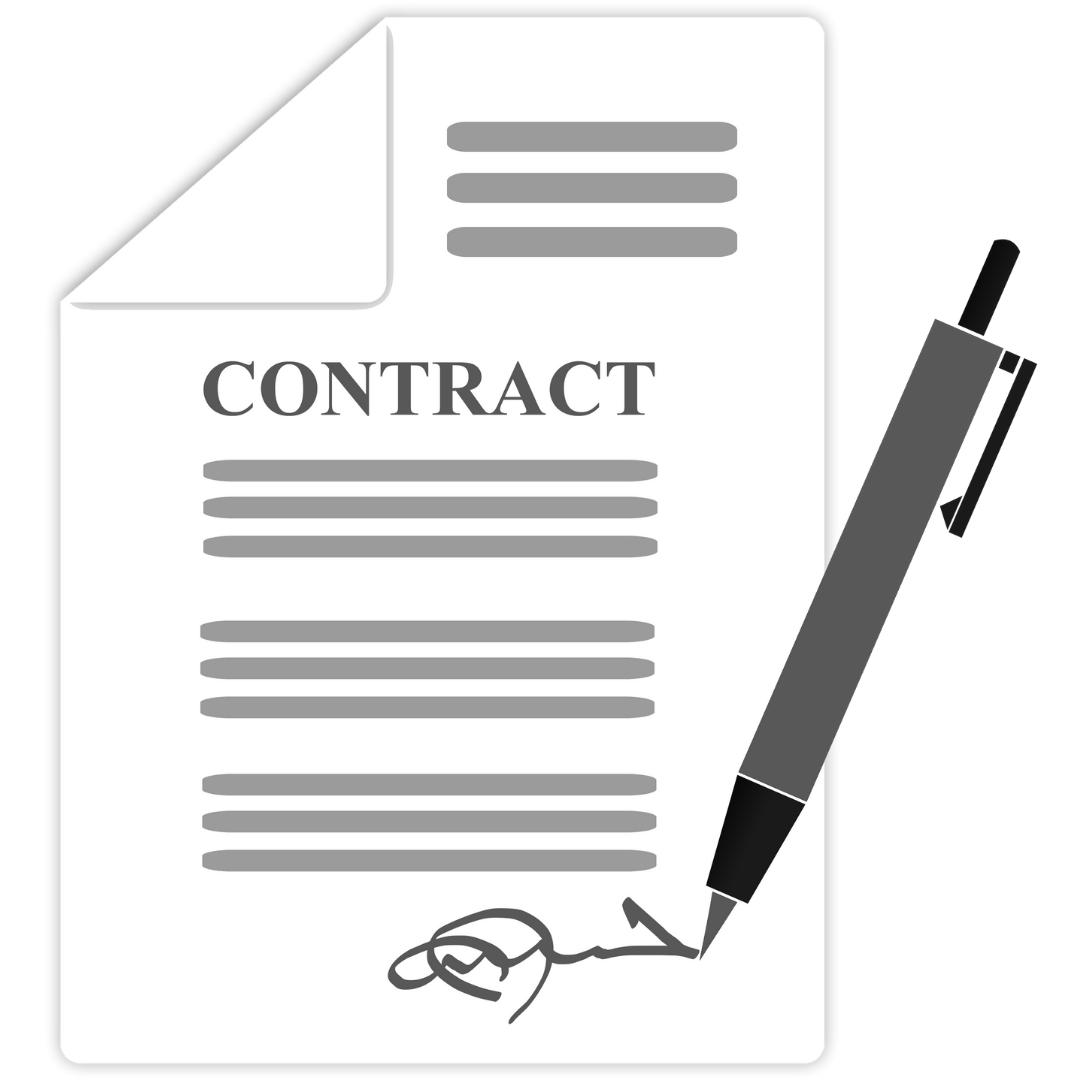Understanding Business Interruption Insurance Coverage

“Here today, gone tomorrow.” An old familiar phrase, but never a welcome one when it pertains to a business. But should the worst happen, an option to keep your business on its feet is readily available.
Business interruption insurance helps businesses protect against monetary losses due to periods of suspended operations when a covered event, such as a fire, occurs and causes physical property damage. The coverage allows businesses to pay fixed expenses, including costs incurred while operating at an offsite location, while the property is closed for repairs and restoration. Policies also reimburse owners for lost revenue that would have otherwise been earned if the business remained open.
Business interruption coverages are typically bundled within a businessowner’s policy (BOP), a commercial package that includes business property and liability coverages or a standalone Commercial Property policy. Most insurers offer this coverage feature for accounts that they are willing to insure.
According to the Federal Emergency Management Agency (FEMA), about 25% of businesses fail to reopen after a disaster strikes, making business interruption coverage even more critical for the long-term survival of an enterprise. While commercial property insurance pays for actual physical damages or losses, a business interruption policy covers lost net income due to the closure of the business while repairs are underway, as well as offering coverage for rent or lease payments, relocation costs, employee wages, taxes, and loan payments. Exclusions from coverage include losses unrelated to property damage, such as lost revenues due to viral outbreaks or pandemics.
Business interruption policies may contain a clause for civil authority coverage, as well, meaning that if a state, local, or federal government entity prohibits access to the business premises, thereby forcing the business to temporarily close, this clause in the business interruption insurance may cover lost income.
Should a calamity strike, you certainly want to be able to say about your business, “Here today, still here tomorrow.” Business interruption coverage holds the key. Contact the professionals at The Reschini Group to learn more and determine the right plan for your business.
https://content.naic.org/cipr-topics/business-interruptionbusinessowners-policies-bop
Copyright 2023 The Reschini Group
The Reschini Group provides these updates for information only, and does not provide legal advice. To make decisions regarding insurance matters, please consult directly with a licensed insurance professional or firm.
The Protection of Coinsurance

Securing appropriate insurance for your business and property can be enough of a process on its own. So what does the concept of coinsurance represent? Nothing less than protection for both the insured and the insurance provider.
Let’s start with defining our terms. Coinsurance is a property coverage provision set by your insurer that requires you to carry coverage for a certain percent of your property's value. That way, your insurer can be sure you have adequate coverage if you need to make a claim, and it can ensure that its resources are adequate to cover that claim.
In a typical commercial property insurance policy, a coinsurance clause ensures that you carry adequate coverage to protect your assets. For instance, for an office building valued at $200,000, you would need at least $200,000 in property insurance coverage. If your policy has a clause with a coinsurance percentage of at least 80%, that means you must insure the building for at least $160,000. If you purchase less coverage, the insurance company may not pay out the full value of your damages, even if they fall within the limits of your policy.
Say you file a claim after a fire causes $100,000 worth of property damage. Your property insurance policy has a limit of $150,000 and a $5,000 deductible. Per your coinsurance clause, you were required to purchase at least $160,000 in coverage. Because you failed to meet your coinsurance percentage of 80%, you will face additional costs as determined by the ratio of the amount you carried divided by the amount that was required: $150,000 / $160,000 = 0.937. So if your loss was $100,000, your insurer will pay $93,700 minus your $5,000 deductible. Your total costs will end up being $11,300.
Not every insurance company includes a coinsurance clause in its policies. However, those that do require coinsurance typically have three reasons for doing so:
- To ensure clients have adequate coverage.
- To protect their pool of resources to better handle real-world claim situations.
- To encourage accurate assessment and underwriting.
The bottom line? When you’re required to meet coinsurance limits and do so, you’re more likely to make an accurate assessment of the value of your assets, which protects the insurance provider and you in the long term. Contact the professionals at The Reschini Group for more information on coinsurance and how it can apply to your business coverage.
Copyright 2023 The Reschini Group
The Reschini Group provides these updates for information only, and does not provide legal advice. To make decisions regarding insurance matters, please consult directly with a licensed insurance professional or firm.
Making a Disaster Worse: Insufficient Documentation When Filing a Claim

Floods, fires, tornadoes. Business owners purchase insurance to protect their property and people against these types of disasters. But what happens when, should the worst occur, you can’t adequately prove what that property was worth, or the financial impact your people are suffering?
It may sound like the most obvious point in the world, but it’s important to have accurate values – and the documentation to prove them to an insurance adjuster. Some good news is that this is not so much an issue impacting your premiums, but it can become a major issue when filing a claim to recover your losses.
The Insurance Information Institute recommends the following:
-- Collect any relevant business records that you will need to prove the value of damaged equipment, inventory or structures that you are including in your business insurance claim. Gather all financial documents including tax returns, monthly sales tax returns, business contracts, budgets, financial statements and other documents pertinent to calculating the projected income of your business.
-- If the business is forced to close down, you will need to provide information on the cost of conducting business from a temporary location, detailed records of business activity, and a list of expenses that have continued while your business has been suspended such as advertising, utilities, etc. Loss of or damage to cars, vans, trucks or specialty vehicles, which can hamper your ability to operate your business, should also be reported.
One of the smartest and easiest ways for a business owner to limit risk is to make sure you know – and can prove – what the various elements that make up your business are worth.
Contact the professionals at The Reschini Group to learn more about insured-to-value coverage for your enterprise.
Copyright 2023 The Reschini Group
The Reschini Group provides these updates for information only, and does not provide legal advice. To make decisions regarding insurance matters, please consult directly with a licensed insurance professional or firm.
New Address, New Terms of Coverage?
 As a business gains traction, achieves success and expands, it can outgrow its original location and facilities, making a move to a new, larger site necessary.
As a business gains traction, achieves success and expands, it can outgrow its original location and facilities, making a move to a new, larger site necessary.
Don’t forget to consult with an insurance professional as part of researching that new location, however. The results can be either advantageous or detrimental to your ongoing financial health.Any change in how a business operates – including where it positions its facilities, equipment, and personnel – requires an analysis of coverage. Physical location can be impacted – either positively or negatively – by factors including:
- The likelihood of severe weather, like hurricanes, windstorms, tornadoes, or hail.
- Does the property sit in a floodplain? Is flooding becoming more common due to the effects of climate change?
- Whether the area shows a statistical trend regarding crime, vandalism, and theft.
- The condition of existing infrastructure, such as plumbing, electrical wiring, and HVAC, as these help to determine the chances of causing fire or water damage.
Similarly, a new service or line of products pursued as part of a business’ expansion plans also introduce new variables in terms of number of employees, equipment needed, safety procedures, and much more – all of which need to be incorporated into a package providing the best insurance coverage possible.“New” in the world of business should mean “better.” To safeguard your investment on the road to improving your overall performance, make sure you have the right insurance protections in place, as well.Contact the professionals at The Reschini Group for more information.
Copyright 2022 The Reschini GroupThe Reschini Group provides these updates for information only, and does not provide legal advice. To make decisions regarding insurance matters, please consult directly with a licensed insurance professional or firm.
Changes Afoot: Who Is Really Covered on Your Policy?
 In life, as in business, education, and any large organization, the only thing that doesn’t change is that everything changes.
In life, as in business, education, and any large organization, the only thing that doesn’t change is that everything changes.
New operational subsidiaries are formed, people in key leadership positions leave and arrive, school districts see new clubs and sports teams rise and fall. Nothing wrong with any of this. It’s the natural ebb and flow. It’s how the world works.The sticky part comes in, however, when you assume the insurance coverage in place extends to any or all of those modifications. Or worse, you don’t think of that question at all.The old adage about why it’s dangerous to assume certainly applies. A policy is written at a moment in time, under specifications and structures that exist then. Unless provisions have been written into that policy to automatically include new elements to the entity being covered, they may not – and probably will not.Always err on the side of caution and communication. Check with your insurance provider any time the terms, shape, size, or any other variable impacts your organization. When changes are afoot, make sure you know who and what is covered under your policy – so that any necessary adjustments can be made before costly surprises arise.Contact the professionals at The Reschini Group for more information.
Copyright 2022 The Reschini GroupThe Reschini Group provides these updates for information only, and does not provide legal advice. To make decisions regarding insurance matters, please consult directly with a licensed insurance professional or firm.
Waiver of Subrogation: Added Protection, Added Costs

Subrogation occurs when an insurer pays their insured for a loss caused by a third- party, and then attempts to recoup their payout by making a claim against the responsible third party.
For instance, if you’re in a car accident and it was the other party’s fault, your insurer pays for repairs to your vehicle and then pursues the other person’s insurance company for the loss. In your insurance policy, which is a contract between you and your insurance carrier, you agreed to allow the carrier to subrogate for any paid loss.In a typical business contract, one business may ask another business to waive its rights of subrogation because the first business doesn’t want to be held responsible for a loss. When agreed to in such a contract, it prevents the business, and its insurer, who has agreed to waive their right, from seeking a share of the damages paid from the other party, even if they are at fault.But be aware that when a business gives up its right to recover any losses, it increases the insurer’s risk and transfers responsibility to the insured and its insurer for sometimes uncontrollable losses. This can lead to unnecessary loss history and potentially increased insurance costs.Conducting regular contractual reviews with your insurer agent can easily point out these exposures and help to you to understand and sometimes negotiate this requirement out of your risk profile.Contact the professionals at The Reschini Group for more information.Copyright 2022 The Reschini GroupThe Reschini Group provides these updates for information only, and does not provide legal advice. To make decisions regarding insurance matters, please consult directly with a licensed insurance professional or firm.
Contractual Review: Ensuring that Your Coverage is Enough
Interesting how commitments can accumulate when you’re not looking, isn’t it?
Heed the Warnings: Surfside Condo and Pittsburgh Bridge
 On June 24, 2021, at approximately 1:22 a.m., a 12-story beachfront condominium in the Miami suburb of Surfside, Florida, partially collapsed, killing 98 people and injuring 11.
On June 24, 2021, at approximately 1:22 a.m., a 12-story beachfront condominium in the Miami suburb of Surfside, Florida, partially collapsed, killing 98 people and injuring 11.
The main contributing factor was identified as long-term degradation of concrete structural support in the ground-level parking garage under the housing units, due to water penetration and corrosion of the reinforcing steel. The problems had been reported in 2018 and noted as "much worse" in April 2021. A $15 million program of remedial works had been approved before the collapse, although no main structural work had been undertaken.On Friday, Jan. 28, 2022, at approximately 6:40 a.m., the Fern Hollow Bridge – which carried roughly 14,000 vehicles a day, connecting major areas of Pittsburgh, Pennsylvania – collapsed about 100 feet into a ravine. Miraculously, no one was killed but about 10 people received injuries. The bridge had received “poor” ratings for the past 10 years from inspectors, and was included in plans to be rehabilitated, but not for another five to seven years.As the shock wears off, the impact on victims and families processed, and the physical work of cleanup and reclamation begins, next come the questions about liability and who is responsible for the costs involved in the aftermath.In the case of the Surfside collapse, there may be issues surrounding the property insurance and the possibility of Director & Officer claims directed at the Condo board. Regarding the Fern Hollow Bridge, various municipal bodies and agencies may face insurance investigations and subsequent litigation. In each instance, warnings about potential failures of the respective structures had been issued, and corrective plans made, but none had been performed in time to prevent a collapse.One thing may be more certain than anything else, however – claims of this scope will trigger enhanced underwriting by the marketplace.Your organization may not necessarily face the same level of disaster as Surfside or Fern Hollow, but there may be identifiable risks in play nonetheless. Once they have been identified and a plan to alleviate them has been developed, it is wise to implement those plans sooner than later, as much as practically and financially possible.For more information on these matters and how to properly prepare, contact the professionals at The Reschini Group today.
Copyright 2022 The Reschini GroupThe Reschini Group provides these updates for information only, and does not provide legal advice. To make decisions regarding insurance matters, please consult directly with a licensed insurance professional or firm.
How Safe is Safe?: The Impact of COVID on Employer Practices Liability
 In addition to the multiple and myriad changes already introduced to the business community by COVID-19, employers may now add possible increased liability and costs, perhaps ironically due to policies instituted to help stem the spread of the virus.
In addition to the multiple and myriad changes already introduced to the business community by COVID-19, employers may now add possible increased liability and costs, perhaps ironically due to policies instituted to help stem the spread of the virus.
According to a 2021 report conducted in part by the Insurance Information Institute, employers need to be aware of the impact of the pandemic, particularly a shift in the burden of proof onto the employer for certain types of claimants and the changing exposure from people working from home.Workers compensation saw five consecutive years through 2019 where that line of business posted an underwriting gain, but the institute-sponsored study said that trend could change with COVID-19. Employer practices liability insurance (EPLI) – separate from workers compensation – has the potential to feel an impact from the pandemic, as well.Mask-wearing mandates, vaccination or regular COVID testing requirements, increased flexibility and the associated variables of home-based work, plus similar pandemic safeguards, may fall prey to varying levels of adherence.This lack of clarity has the potential for coverage-related issues, should employees become infected and require ongoing treatment for the virus. Similarly, this uncertainty feeds into the increased premium costs for employers to adequately protect their businesses.As new variants of the COVID virus develop and spread – even as vaccines become more refined and effective – the pandemic will continue to have wide, deep, and continuous ripple effects on all aspects of business, including EPLI and workers compensation insurance.For more information on these matters and how to properly prepare, contact the professionals at The Reschini Group today.
Copyright 2022 The Reschini GroupThe Reschini Group provides these updates for information only, and does not provide legal advice. To make decisions regarding insurance matters, please consult directly with a licensed insurance professional or firm.Source: https://www.iii.org/press-release/recession-pandemic-to-affect-p-c-underwriting-results-new-triple-i-milliman-report-shows-081320
